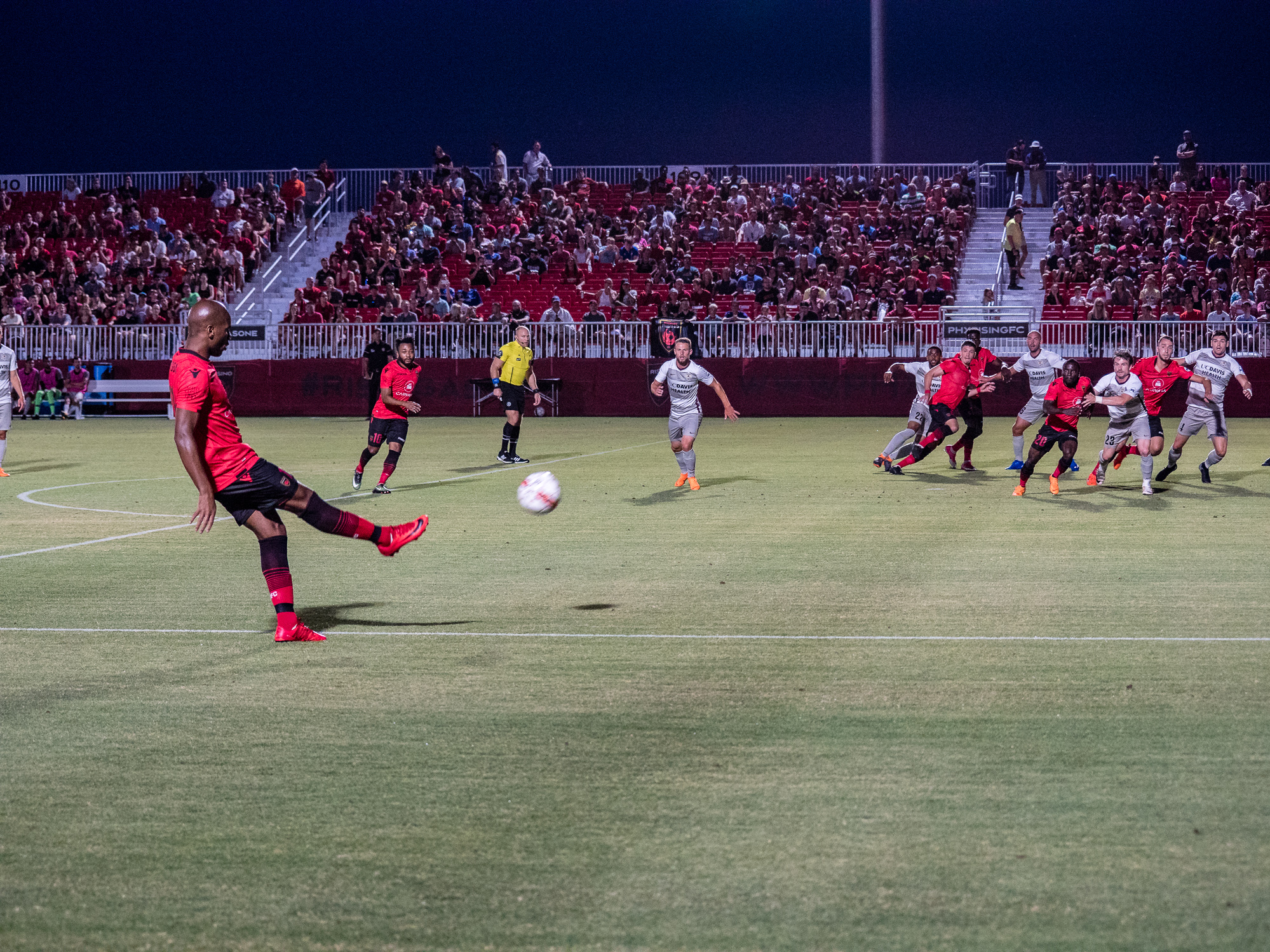Welcome back to Rising Tactics Recap, a weekly column where I attempt to provide insight to Phoenix Rising fans by breaking down some strategic and tactical observations from Phoenix’s latest match.
Phoenix Rising’s 4-0 win against Tacoma on Saturday night was nothing new…for the Defiance. Tacoma leaks goals on the road. That has already been well established in the early part of the 2019 USL season.
While a tough loss away from home was borderline standard behavior for Tacoma, things were a little less routine for Phoenix this past weekend. So far this year, Phoenix have struggled to put together comprehensive attacking performances and gain multi-goal leads. More important than that, before Saturday night, Phoenix Rising had yet to win a home game.
They accomplished all of those things against Tacoma: Phoenix scored goals in several different ways, played their way to a multi-goal lead, and secured their first home victory of the season.
Today, we are going to break down the nitty-gritty details of each goal from Phoenix Rising’s most recent game and look at some of the ways they can threaten future opponents.
1-0:
On Junior Flemmings’ opening goal, Phoenix used the ball to shift Tacoma’s defensive shape from side-to-side. As Joey Farrell passed the ball to AJ Cochran, the opposing defensive block was forced to slide over to track the ball and the movement of Phoenix’s attacking players.
Horizontal ball movement is one of the most effective ways to create space in wide areas and we can see that in this goal sequence. Tacoma’s 4-4-2 defensive shape could not move all the way over to Phoenix’s left wing, which allowed Flemmings to receive the ball in space and drive at the defense.
Another attacking principle on display here is Rick Schantz’s off-ball possession rotations. Notice that as Farrell passes the ball around the back, left back Amadou Dia and Flemmings switch places. Dia tucks inside and Flemmings positions himself closer to the sideline, where he is able to find the ball.
Dia’s inside run attracts a Tacoma defender, which creates a sliver of daylight for his left winger to exploit. An utterly fantastic cut inside onto his right foot and a low-driven shot later and Flemmings put Phoenix Rising up 1-0.
2-0:
This goal sequence starts with Phoenix Rising high pressing off of a Tacoma Defiance goal kick. Due to the camera angle, it is hard to tell exactly what positional alignment Phoenix used to press on this play, but we can see that Phoenix’s attacking players matched up with an opposing player to deny them any space to receive the ball and build from the back.
Because Tacoma’s central defenders and central midfielders had little room to operate, the goalkeeper was forced to play a lobbed ball to the right side of Phoenix’s defense. Mustapha Dumbuya won the ball, turned his defender, and quickly found Solomon Asante in space.
Solid pressing structure, combined with Dumbuya’s aerial challenge and smooth work on the ball allowed Phoenix to find Asante, their best wide playmaker, and feed Jason Johnson inside the box.
3-0:
I believe that the MVP of the buildup to Phoenix’s third goal was not the actual goal-scorer, Flemmings, or the assist-provider, Johnson. It wasn’t even Cochran, who played a pinpoint pass into the attack.
It was Collin Fernandez.
Rick Schantz spoke very highly of Fernandez (and Kevon Lambert) after Saturday night’s game against Tacoma: “Those two guys [Fernandez and Lambert] are warriors. I told them that they may not be the prettiest soccer players, but their heart is on their sleeve and I love it.”
Why is Fernandez the MVP of this sequence? Because he hustles, gets to a loose ball, and helps his team maintain possession. That kind of defensive effort and timing was lacking early on this season, but since Schantz inserted Fernandez into the starting lineup, Phoenix has been much better at tracking down and winning balls in midfield.
4-0:
This goal is another example of Phoenix’s improved ability to defend, win the ball, and transition quickly into the attack.
Phoenix use their extended pressure to close off forward passing options and force Tacoma’s keeper to play long. Dia beats an opponent to the ball, but can’t quite settle it or play it forward to Flemmings. With the ball still bouncing around, Cochran beats another opponent to the ball and tries to send play forward to the attackers while Tacoma are out of their shape.
Johnson wins a header and Flemmings uses his acceleration and speed to get into the box and find Asante.
When Phoenix Rising win individual battles and move the ball forward quickly into the attack, they are very, very hard to stop.
Now that we’ve looked at each of the goals, let’s move into The Final Third:
- I’m not sure I’ve ever been as confident in Phoenix Rising’s midfield depth as I am right now. Fernandez, Lambert, and Aguinaga (while Bakero isn’t in the lineup) have solidified themselves as the first-choice trio, but Javi Pérez (when he’s here), James Musa, and Devin Vega are all extremely serviceable options off the bench.
- Compared to Adam Jahn and Ben Spencer, Jason Johnson provides something unique at striker: speed. Johnson is still working on his movement and timing when played up top, but he allows Phoenix to play more vertically, which could be advantageous later this season.
- Mustapha Dumbuya’s skill set was maximized last Saturday against Tacoma. Dumbuya is at his best when allowed to win defensive battles in the opposing half, use his speed to get forward on the right, and get creative with the ball. His ability to defend in a defensive block is still under the microscope.
Thanks for reading this week’s edition of Rising Tactics Recap! Check back next week for more insight and analysis.




